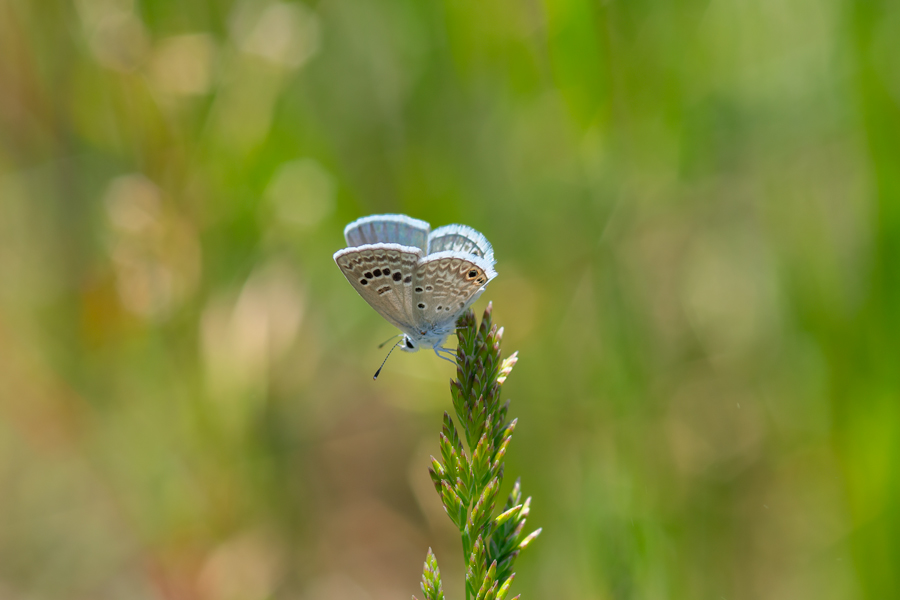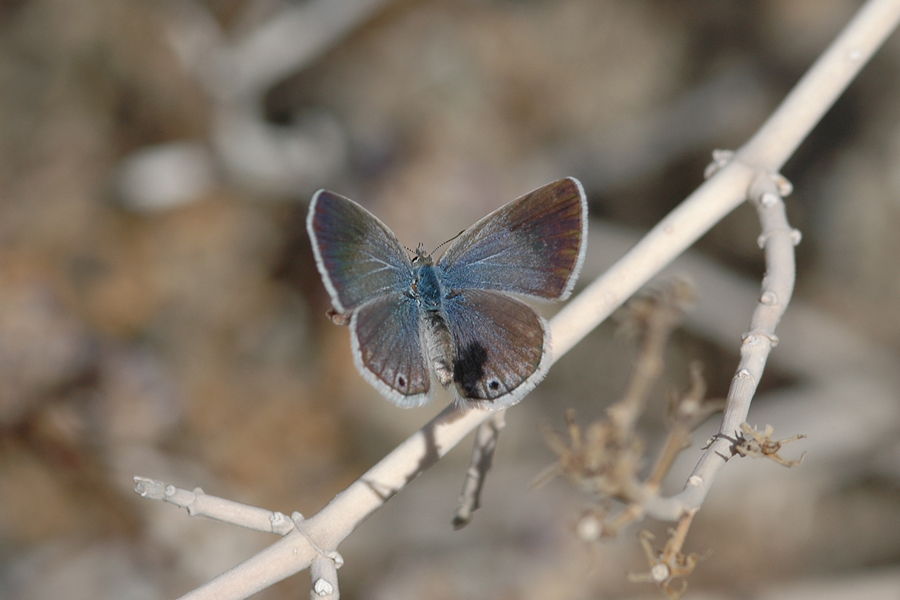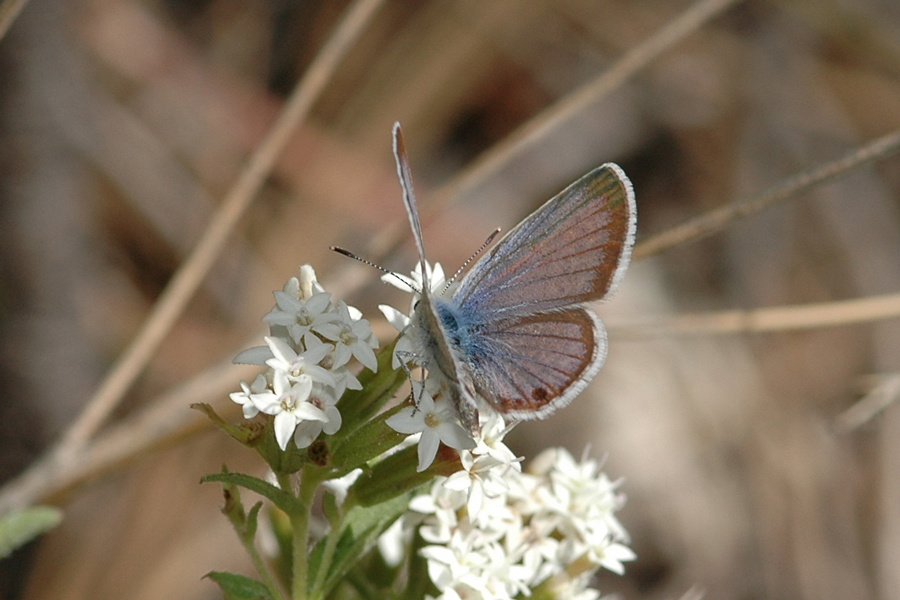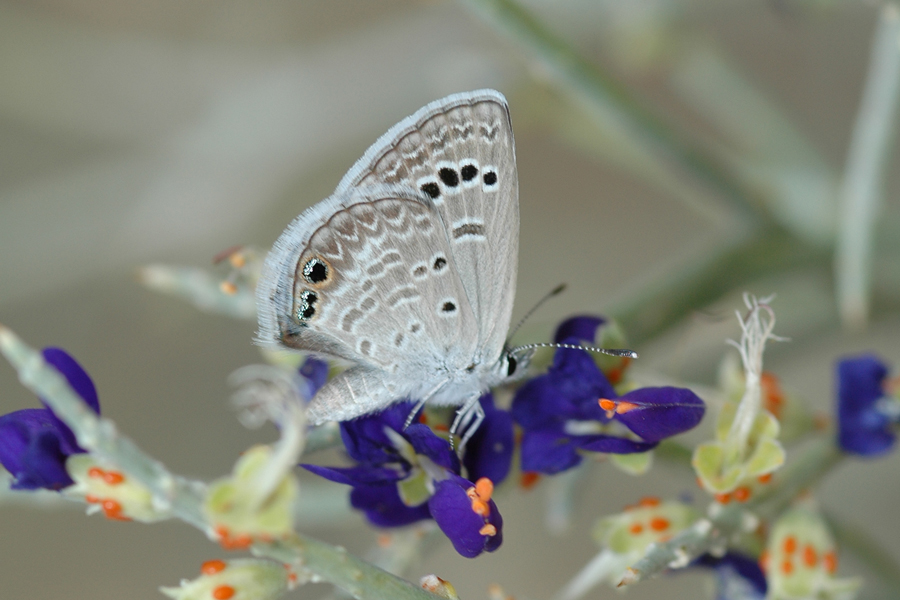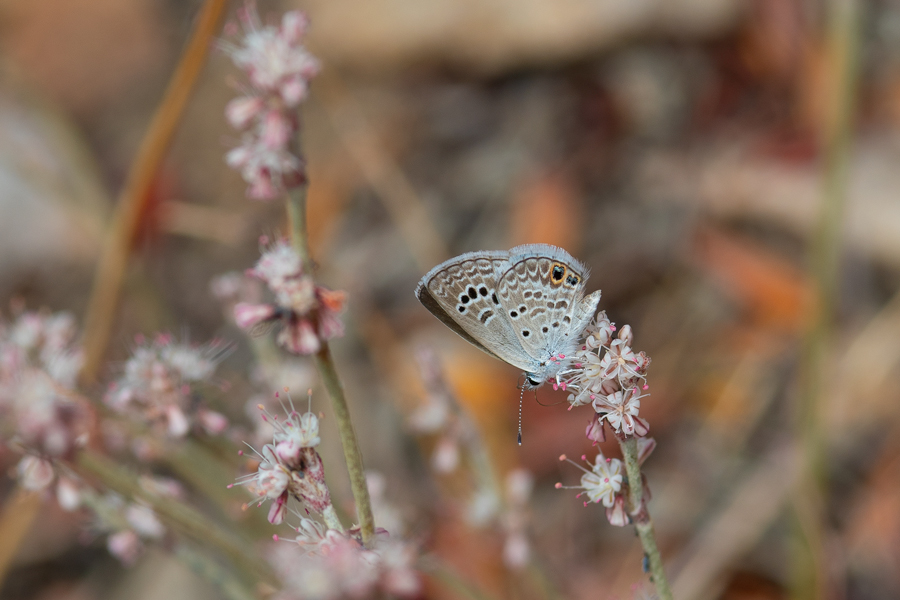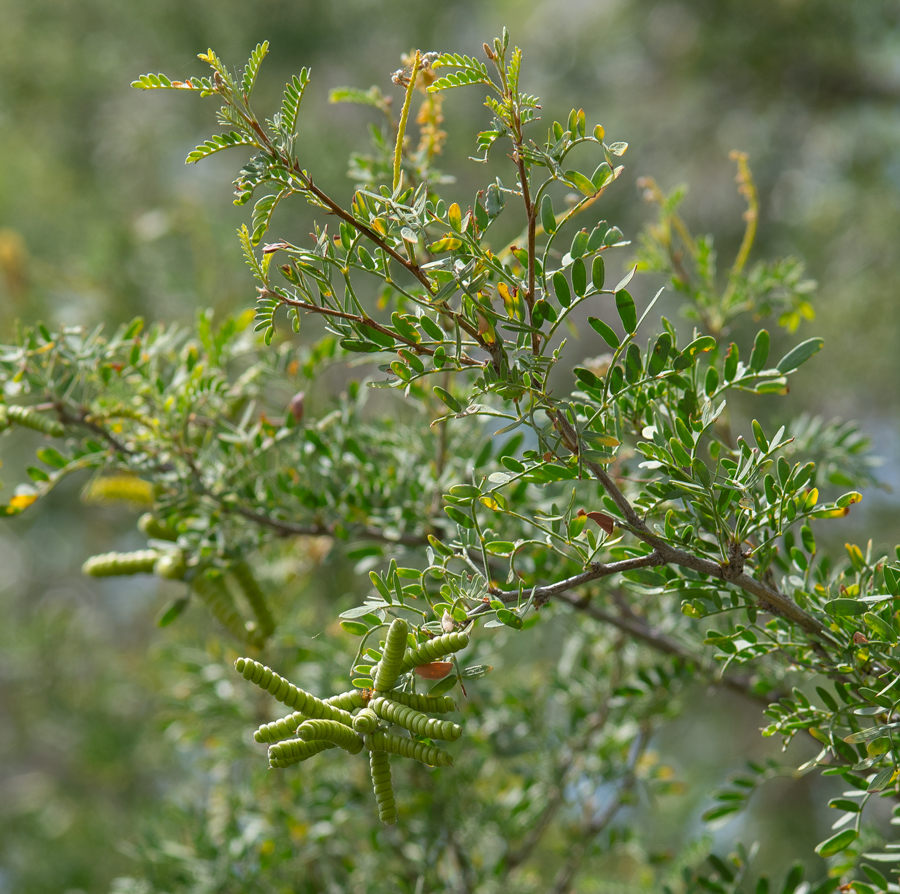Echinargus isola
Reakirt's Blue
The distribution of this blue is very strange. With mequite as the larval food plant, one would expect it to be confined to areas where mesquite does well. Yet Reakirt's blues will show up just about anywhere, far from the main food plants, perhaps just for one season. This contrasts especially with Euphilotes blues, species of which rarely wander far from their plants, even as adults looking for nectar. Then again, it could be that Reakirt's blues can and do use other Fabaceae-family plants and aren't telling us.
The row of black dots with white halos on the underside forewing distinguish this blue from ceraunus and marine blues. Many times I've seen all three on the same plant. In fact, you can almost expect this when big mesquite shrubs are in bloom around Scissors Crossing.
